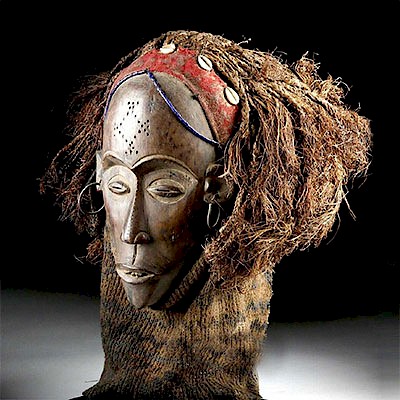Egyptian Late Dynastic Wood Coffin Model
Lot 3b
About Seller
Artemis Fine Arts
686 S Taylor Ave, Ste 106
Louisville, CO 80027
United States
Selling antiquities, ancient and ethnographic art online since 1993, Artemis Gallery specializes in Classical Antiquities (Egyptian, Greek, Roman, Near Eastern), Asian, Pre-Columbian, African / Tribal / Oceanographic art. Our extensive inventory includes pottery, stone, metal, wood, glass and textil...Read more
Estimate:
$10,000 - $15,000
Absentee vs Live bid
Two ways to bid:
- Leave a max absentee bid and the platform will bid on your behalf up to your maximum bid during the live auction.
- Bid live during the auction and your bids will be submitted real-time to the auctioneer.
Bid Increments
| Price | Bid Increment |
|---|---|
| $0 | $25 |
| $300 | $50 |
| $1,000 | $100 |
| $2,000 | $250 |
| $5,000 | $500 |
| $10,000 | $1,000 |
| $20,000 | $2,500 |
| $50,000 | $5,000 |
| $100,000 | $10,000 |
| $200,000 | $20,000 |
About Auction
By Artemis Fine Arts
Apr 4, 2019
Set Reminder
2019-04-04 10:00:00
2019-04-04 10:00:00
America/New_York
Bidsquare
Bidsquare : Ancient / Ethnographic From Around The World
https://www.bidsquare.com/auctions/artemis-gallery/ancient-ethnographic-from-around-the-world-4003
Ancient art from Egypt, Greece, Italy and the Near East, as well as Asian, Pre-Columbian, Native American, African / Tribal / Oceanic, Spanish Colonial, Russian Icons, Fine art, much more! All categories, all price ranges... all legally acquired and guaranteed to be as described or your money back Artemis Fine Arts info@artemisfinearts.com
Ancient art from Egypt, Greece, Italy and the Near East, as well as Asian, Pre-Columbian, Native American, African / Tribal / Oceanic, Spanish Colonial, Russian Icons, Fine art, much more! All categories, all price ranges... all legally acquired and guaranteed to be as described or your money back Artemis Fine Arts info@artemisfinearts.com
- Lot Description
Egypt, Late Dynastic Period, 26th Dynasty, ca. 664 to 525 BCE. A wonderfully preserved example of a small model of a coffin, made from two pieces of wood, adorned with gesso over cloth, then painted. The coffin has a slot as part of its feet that is a third piece of wood, and probably indicates that it was meant to be displayed standing up, as in the Ptah-Soker-Osiris tradition. Size: 4.6" L x 4" W x 16.75" H (11.7 cm x 10.2 cm x 42.5 cm)
The back of the coffin is painted with a series of hieroglyphs, though few are still legible. Their mirror image positions indicate that this was meant to be read right-to-left, and clearly we can see three "E"s at the top, and the symbol for stairs a few lines down. Many of the other hieroglyphs seem to have been deliberately destroyed - the animal ones, in particular - a sad but unfortunately prevalent practice for objects placed in burial chambers. Based on a similar example in the British Museum, these hieroglyphs represented some kind of spells for protection in the afterlife. On the other side is a better-preserved painting showing a mummiform body; the paint has faded to pale pink, blue, and cream, with black details including a goatee and crown. The facial details are well-painted and wonderfully Egyptian, with huge eyes and dark, large eyebrows. The interior of the coffin is empty; the hollowed-out chamber is only in the upper body, with the legs not cut out. This chamber would once have contained a model of a human figure, perhaps made of wax or mud. One suggestion for their purpose is that they were meant as replacements where a real body had been lost, perhaps in a fire or flood.
Provenance: Ex-Hagar Collection, Ex-private NC collection acquired in the 1980's
All items legal to buy/sell under U.S. Statute covering cultural patrimony Code 2600, CHAPTER 14, and are guaranteed to be as described or your money back.
A Certificate of Authenticity will accompany all winning bids.
We ship worldwide and handle all shipping in-house for your convenience.
#119285Age wear, especially to the underside, with some losses to the wood along the connecting edges. Losses to the gesso and cracks to the paint/plaster are also present. Much artwork remains.Condition
- Shipping Info
-
All shipping is handled in-house for your convenience. Your invoice from Artemis Gallery will include shipping calculation instructions. If in doubt, please inquire BEFORE bidding for estimated shipping costs for individual items.
-
- Buyer's Premium



 EUR
EUR CAD
CAD AUD
AUD GBP
GBP MXN
MXN HKD
HKD CNY
CNY MYR
MYR SEK
SEK SGD
SGD CHF
CHF THB
THB




















